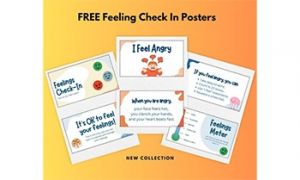

In early childhood education, minimum ratios is one of the most insidious drivers of burnout across the sector. When minimum standards become maximum limits, educators are expected to absorb overwhelming cognitive and emotional loads while maintaining composure, care, and compliance. The result? Chronic stress, professional dissonance, and rising attrition. Ratios don’t just affect supervision—they shape every moment of decision-making, relational engagement, and safeguarding. The following article provides research on the effect of ratios on educators.
Here’s a curated set of critical reflection questions designed to provoke deep thinking around educator-to-child ratios in early childhood settings.
In early childhood education and care, ratios are more than a technicality—they are a frontline safeguard. Every child deserves responsive supervision, emotional connection, and developmental support. Yet in Australia, the current staff-to-child ratio standards may meet regulatory requirements, but they fall short of protecting what matters most: children's safety and well-being.
Across Australia, regulated staffing ratios aim to safeguard children in early learning settings. However, a growing number of incidents reveal that meeting these minimum requirements on paper doesn’t always translate into active, vigilant supervision. Below are several case studies that illustrate how gaps can emerge—even when legal ratios are nominally met.
Recent charges against two childcare workers in Western Sydney have reignited critical conversations about child safety, supervision practices, and compliance structures in early learning centers. On June 26, a 17-month-old child was allegedly assaulted twice in separate incidents on the same day—each involving a different educator—raising concerns about how such occurrences go undetected.
We’ve built a sector where “under the roof” staffing logic can mask supervision breakdowns. Where ratios are met on paper, but no one is actively watching. Where a child can be harmed twice in one day—and no one notices until it’s too late.
We need to stop pretending that minimum standards are enough. Because they’re not. Children deserve active supervision, not passive headcounts. Educators deserve clear protocols, not vague staffing models.
The “under the roof” rule allows childcare centres to meet staffing ratios by counting all educators on-site, regardless of whether they are physically present in rooms with children. This means a centre may appear compliant on paper, even if individual rooms are understaffed.While originally intended to offer flexibility, educators say it’s now being used to cut corners—leaving children without adequate supervision and educators stretched beyond capacity.
A recent survey conducted by the United Workers Union (UWU) has revealed a troubling reality in Australia’s early childhood education sector: 77% of childcare workers report that their centres operate below minimum staffing levels at least once a week, with 42% saying this occurs daily.
According to respondents to a 7.30 inquiry, a technique at early childhood services known as "under the roof"—which determines the ratio of Educators to children—is being misused.
 Here is the list of the EYLF Learning Outcomes that you can use as a guide or reference for your documentation and planning. The EYLF… Read More
Here is the list of the EYLF Learning Outcomes that you can use as a guide or reference for your documentation and planning. The EYLF… Read More
 The EYLF is a guide which consists of Principles, Practices and 5 main Learning Outcomes along with each of their sub outcomes, based on identity,… Read More
The EYLF is a guide which consists of Principles, Practices and 5 main Learning Outcomes along with each of their sub outcomes, based on identity,… Read More
 This is a guide on How to Write a Learning Story. It provides information on What Is A Learning Story, Writing A Learning Story, Sample… Read More
This is a guide on How to Write a Learning Story. It provides information on What Is A Learning Story, Writing A Learning Story, Sample… Read More
 One of the most important types of documentation methods that educators needs to be familiar with are “observations”. Observations are crucial for all early childhood… Read More
One of the most important types of documentation methods that educators needs to be familiar with are “observations”. Observations are crucial for all early childhood… Read More
 To support children achieve learning outcomes from the EYLF Framework, the following list gives educators examples of how to promote children's learning in each individual… Read More
To support children achieve learning outcomes from the EYLF Framework, the following list gives educators examples of how to promote children's learning in each individual… Read More
 Reflective practice is learning from everyday situations and issues and concerns that arise which form part of our daily routine while working in an early… Read More
Reflective practice is learning from everyday situations and issues and concerns that arise which form part of our daily routine while working in an early… Read More
 Within Australia, Programming and Planning is reflected and supported by the Early Years Learning Framework. Educators within early childhood settings, use the EYLF to guide… Read More
Within Australia, Programming and Planning is reflected and supported by the Early Years Learning Framework. Educators within early childhood settings, use the EYLF to guide… Read More
 When observing children, it's important that we use a range of different observation methods from running records, learning stories to photographs and work samples. Using… Read More
When observing children, it's important that we use a range of different observation methods from running records, learning stories to photographs and work samples. Using… Read More
 This is a guide for educators on what to observe under each sub learning outcome from the EYLF Framework, when a child is engaged in… Read More
This is a guide for educators on what to observe under each sub learning outcome from the EYLF Framework, when a child is engaged in… Read More
 The Early Years Learning Framework describes the curriculum as “all the interactions, experiences, activities, routines and events, planned and unplanned, that occur in an environment… Read More
The Early Years Learning Framework describes the curriculum as “all the interactions, experiences, activities, routines and events, planned and unplanned, that occur in an environment… Read More

The following article lists some Common Interview Questions and Tips On How To Answer Them...
See more...
In early childhood settings, emotional literacy is foundational to well-being, learning, and relationships. The free...
See more...
The 11th of February is International Day of Women and Girls in Science. It enables...
See more...© 2009-2025 Aussie Childcare Network Pty Ltd. All Rights Reserved.
